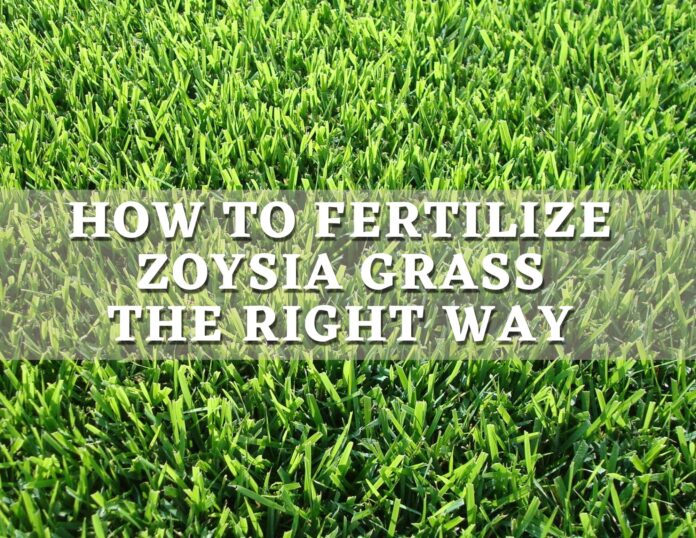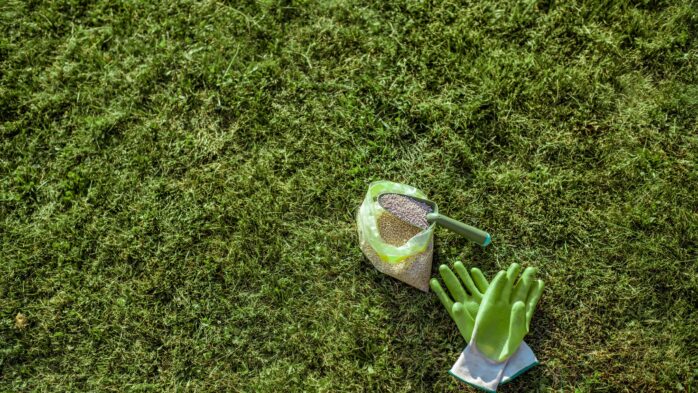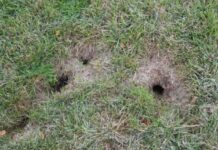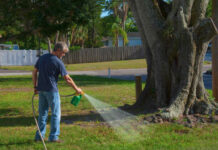
Zoysia grass originates from Asia and succeeds in warm and humid areas around the globe. Although beautiful, resistant, and low maintenance, it still requires fertilizing it properly throughout the year. It is well worth the time since this species is quite a gem when it comes to decorative lawns.
It is a perennial cultivar which means it will grow back right after the winter period. This grass is dense, thick, and possesses bright green color, which is something that every lawn enthusiast will absolutely adore.
To grow it properly, you should know how to fertilize it the right way, and we will try to assist you with that endeavor in this article. In order to do so, we have listed some of the waypoints you should follow.
Type of fertilizer is important

In order to fertilize the grass, you first must choose the appropriate fertilizer to start with. First of all, it is important that it is nitrogen-based. For 1000 square feet of ground, you will need roughly four pounds of it throughout the year.
The ideal mix for this grass should be 15% of nitrogen, always 0% of phosphorus, and between 5 and 10% of potassium since nitrogen is the most important nutrient this cultivar needs. Potassium is extremely valuable since it creates shock and drought resistance over time.
Zoysia can often lack certain nutrients, which typically occurs when soil is in desperate need of a pH change. The best solutions for this are sulfur and, on some occasions, lime since they are great options to solve pH imbalance.
It is extremely important to pH test the soil on your lawn since, on some occasions, it can be phosphorus-deficient. The right course of action is to up the dosage of phosphorus in your fertilizer from 0 to 4% and to kick nitrogen up by 1%, while potassium should be on 8%.
How much fertilizer is correct for Zoysia
It is important to get the right amount of fertilizer for this cultivar. Adding too much of it can create permanent damage to the plant and cause scorch and burn marks on the leaves. Also, it is very important to stick to the manufacturer’s directions regarding the fertilizer application and the time frames on which you should act.
Typically, for this particular species, you should apply up to four pounds of fertilizer three times over the course of a year. You can add different pesticides, pre and post-emergents, and various soul enhancers with any type of fertilizer. You should avoid using fertilizers during stressful times for plants, such as drought seasons.How to fertilize it during early and middle of summer
In the early stages of summer, once the growth of grass initiates, you should start the fertilizing process. Add between ½ and 1 pound of 15-0-15 mixture to your lawn. You should also add some pre-emergent herbicidepre-emergent herbicidepre-emergent herbicidepre-emergent herbicide since it is a great weed and feed product, suitable for the starter growing stage. This will eradicate any weeds that might attack your grass and prevents various problems that can emerge down to the road.
After some time, when you have mowed the lawn 5 or 6 times already, it is time to add another dose of fertilizer. This typically takes place during the middle of the summer, and at this point, you should add another ½ or 1 pound. Some weeds might manage to pull through and grow roots, so you should add some post-emergent product that will remove them.
How to fertilize it during late summer

Late summer is the period when the season is slowly winding down. At this point, you should add the same amount of fertilizer as before. If you notice that the weeds are still there, you should go for another dose of weed and feed product. If that is not the case, adding some pre-emergent herbicides will prevent the weeds from growing in the future.
How to maintain lawn after you have applied fertilizer
After you fertilize zoysia grass, it is essential that it gets enough moisture. This applies for any other period, but post-application care demands that you water it regularly. Typically, this species requires somewhere between 1 and 1.25 inches of water throughout the week. It is essential to water the grass after you apply pre-emergent products as well.
This is very important since granules must disperse, and it will not be possible if there is not enough moisture. It can also cause damage to the weed and leave burning marks on leaves. It is advised to follow weather forecasts and fertilize the soil before the rain to get the best effect. When the product finally finds its way to the soil it will form a barrier between the plants.
Moisture is also very important for post-emergent products too. Apply them on moist grass blades for the best effect. This way, granules will stick to the grass’ weeds. These herbicides absorb through the leaves, and this type of application will grant you the best results possible.
Always stick to the precise measurements manufacturers provide you with. Bear in mind that all fertilizers measurements are calculated for 1000 square feet. If you are uncertain how much you should apply, there are various fertilizer calculator pages on the internet that will help you measure just the right amount for your beautiful lawn.
Final words
Zoysia grass is an amazing, slow, and low-growing, sod-forming species. Since it is easy to maintain, it is highly popular. Of course, easygoing care for this cultivar is not the main reason for its popularity. Thick, dense texture alongside full and bright color is what is attracting lawn enthusiasts from all over the world to this grass.
However, growing and keeping it healthy is not such an easy task. You should be vigilant since various pests can invade it and ruin your hard work. Sometimes, weather conditions might get it, so pay close attention to that factor as well. Either way, it is essential to keep up to date with fertilizing techniques and make your lawn beautiful all year long.
We hope we managed to resolve some dilemmas you had with this particular type of grass. Read our article carefully, make sure you got measurements right, and create that bright, green lawn that all neighbors will envy!






